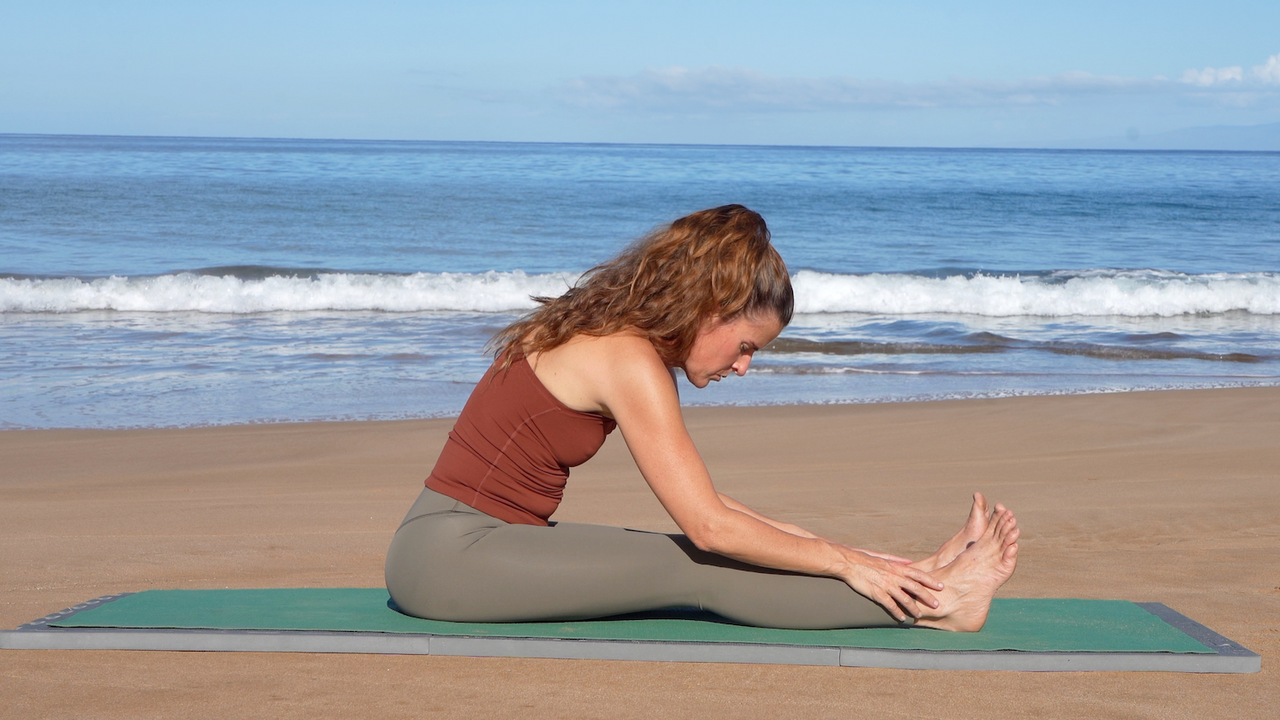Why round your spine in Yin Yoga?

We're conditioned to believe that our backs should be kept straight in Yoga. This is a popular alignment instruction repeated by many yoga teachers and therapists. In reality, however, it's impossible to keep the spine straight. The spinal column is a curvy structure that's not meant to be rigid; it has a brilliant architecture that's meant to move and flex.
Simply getting up out of bed is a movement that puts enormous pressure on the spinal discs, never mind all the movements our body supports throughout each day. This is why our vertebrae are so carefully cushioned, and why the lower spine is desensitized. If it weren't we'd feel a lot of pain with every movement.
The lower back is also a fabulously resilient and well-built structure. The lowest part of the spine, called the sacroiliac joint, is massively padded. Because of the ongoing loads it must bear to support our movements, it's also prone to some problems – particularly chronic tension and pain syndromes.
When pain arises, conventional therapies often include keeping the spine straight and moving it as little as possible. While this is appropriate for some types of serious injuries, more often movement is what is needed.
As yogis, we know that stiffness and pain in the back can often be relieved by moving the spine rather than treating it like it's fragile. This requires a certain amount of trust in the spine's resilience and strength, especially if there's discomfort or fear during movement. The Yin approach focuses on gently introducing lower back mobility rather than keeping it still.
The spine is protected by seven layers of fascia that respond to stress – appropriate amounts of stretching and compression – by growing stronger and more pliable. In other words, the more you move your spine, the more your spine will be able to move.
The 45 minute yoga class video below is a guided sequence of postures to release tension in the myofascial network of the lower back and sacrum. This approach focuses on gently introducing lower back mobility rather than keeping it still.
Download the Low Back Class PDF
The spine has curves that are meant to move
The spine's curves are meant to bend. Each of the spine's four sections has its own natural curves. A forward (kyphotic) curve is normal for both the lumbar (low back) and cervical (neck) sections, while a backward (lordotic) curve is normal for the sacral (sacrum) and thoracic (rib) sections.
There is a visual culture in the fitness world that is preoccupied with aesthetics and straight lines. Fear of rounding the spine is prevalent. This fear has made its way into yoga teacher trainings and has become embedded in popular yoga alignment rules. Many of these rules are not supported by research or clinical studies.
Yin Yogis believe that movement is good for the spine in appropriate amounts and that rounding and bending the spine not only feels good, but is necessary for long-term spinal health.
Contraindications
Yoga may not be advised if you have acute lower back pain, nerve pain, or spasms in your back. Yoga also may not be appropriate for anyone who is unable to stand or sit upright without pain. If any of this is present, consultation with a doctor or therapist is recommended before doing yoga.
Who this low back yoga video is for
Yin Yoga may be appropriate for anyone with tightness or stiffness in the lower back. It may also help relieve achy feelings in your low back, sacrum or hip area. It can also maintain and improve lower back health in aging bodies.






